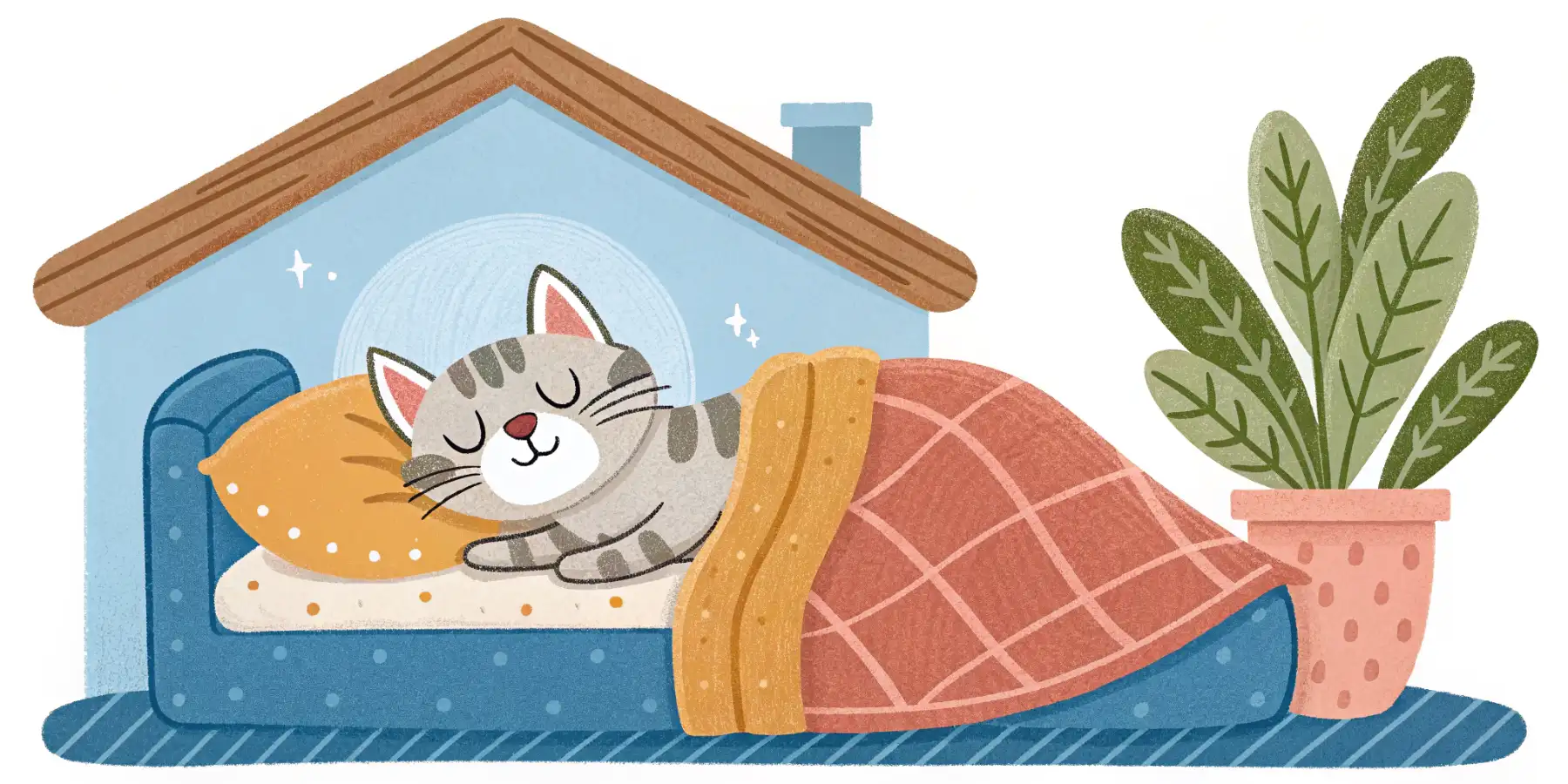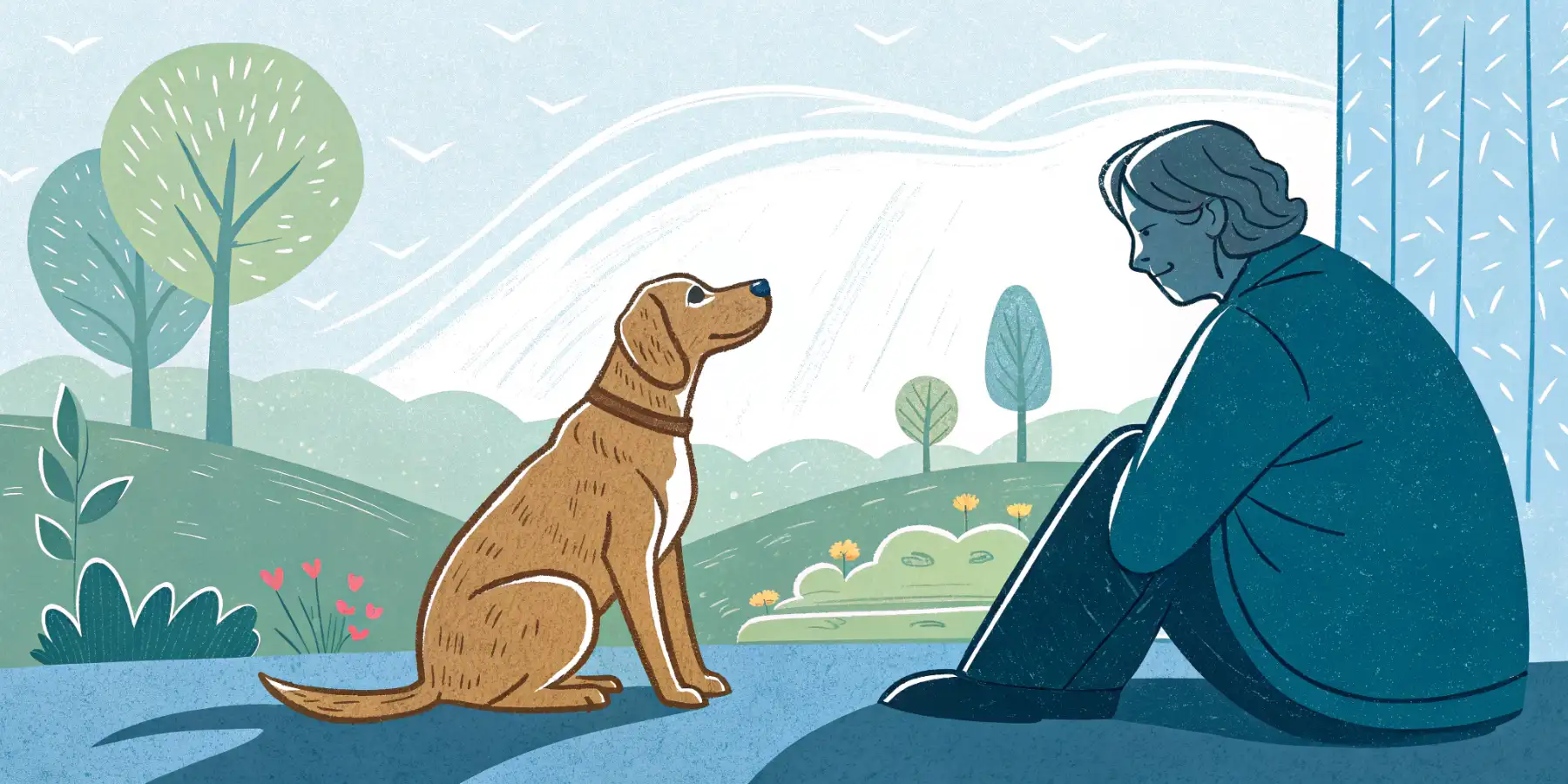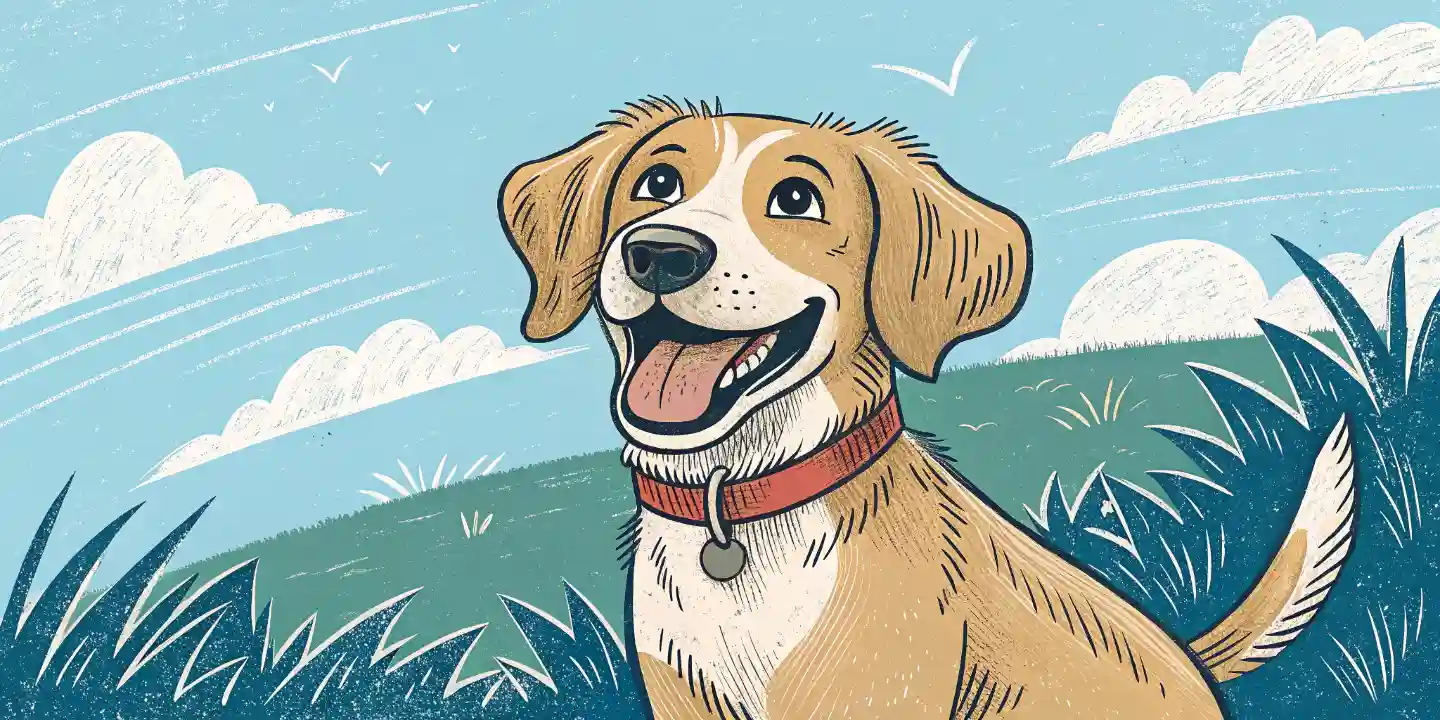
Dog Dementia: Spotting the Signs & Care Tips
Is your senior dog confused? Learn to spot the signs of dog dementia and get care tips to help them live comfortably!
Is Your Senior Dog Showing Signs of Confusion? Understanding Canine Cognitive Dysfunction
As our beloved dogs enter their golden years, we celebrate their wisdom and companionship. But just like humans, dogs can experience age-related cognitive decline, often referred to as Canine Cognitive Dysfunction (CCD) or, more simply, dog dementia. It’s a tough reality, but understanding CCD is the first step in helping your furry friend live comfortably and with dignity. I’ve seen firsthand the impact this condition can have on both dogs and their families, and I’m here to guide you through recognizing the signs and exploring management strategies.
What is Canine Cognitive Dysfunction?
Canine Cognitive Dysfunction is a neurodegenerative disorder similar to Alzheimer’s disease in humans. It affects older dogs, typically those over the age of seven, although it can sometimes appear earlier. CCD results from changes in the brain, including the accumulation of beta-amyloid plaques (the same culprit in human Alzheimer’s), decreased blood flow, and neuronal damage. These changes lead to a decline in cognitive abilities, affecting memory, learning, awareness, and executive functions. In other words, your dog may start exhibiting behaviors that are out of character and seemingly unexplainable. Many owners come to me worried about their senior dog’s confusion and disorientation, and often, CCD is the underlying cause.
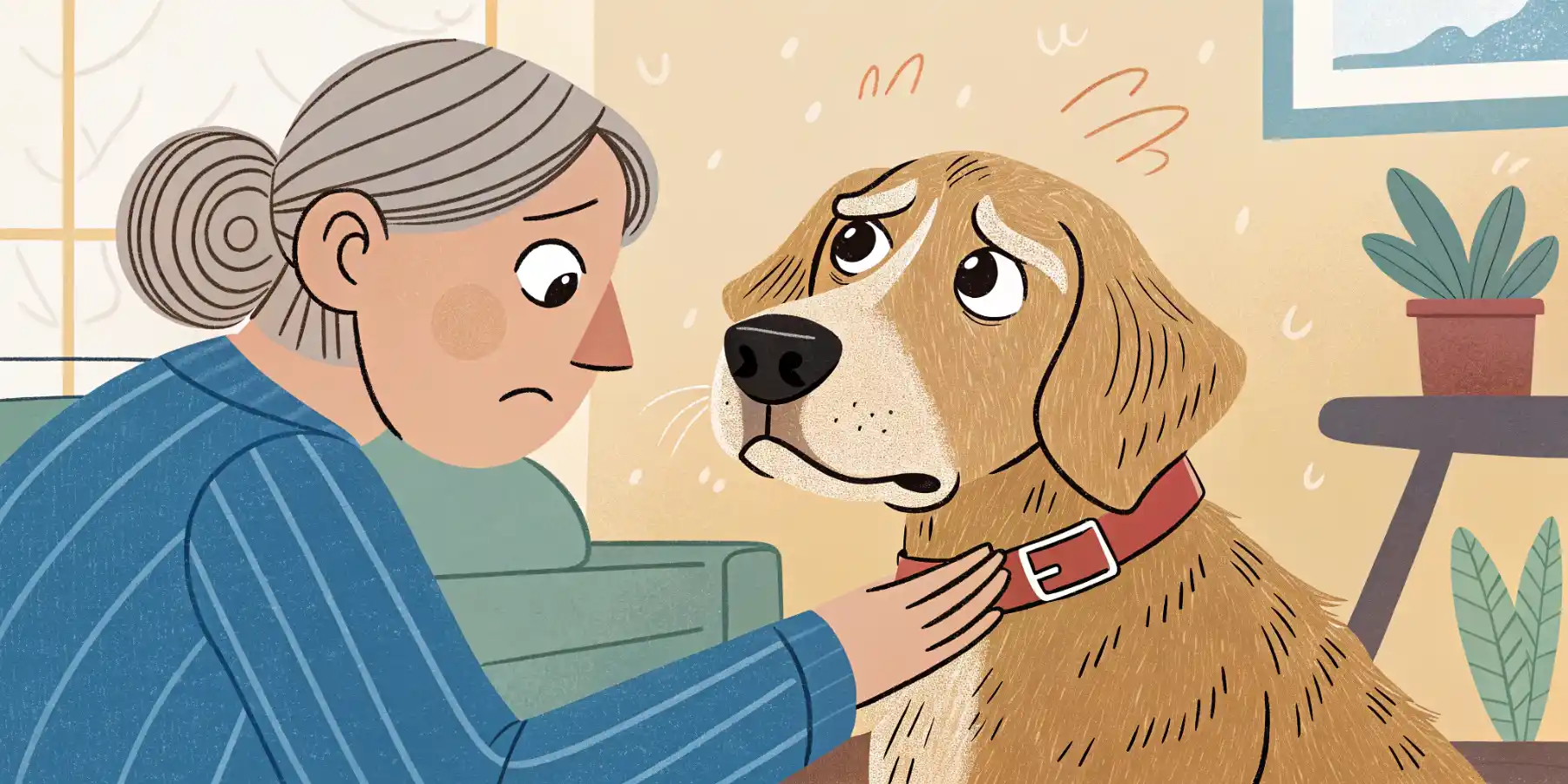 A senior dog displays a common sign of Canine Cognitive Dysfunction: confusion and disorientation. Early detection is key to managing the condition effectively.
A senior dog displays a common sign of Canine Cognitive Dysfunction: confusion and disorientation. Early detection is key to managing the condition effectively.
Recognizing the Signs: The DISHA Acronym
Diagnosing CCD can be challenging as the signs can be subtle and easily attributed to “just getting old.” However, being aware of the key indicators can help you identify the problem early and seek veterinary help. A helpful acronym to remember the signs is DISHA:
-
Disorientation: This is perhaps the most telling sign. Your dog may get lost in familiar places, wander aimlessly, stare blankly at walls, or have difficulty navigating around furniture. They might forget where their food bowl is or struggle to find their way back inside after being in the yard. I once had a client whose dog would get stuck behind the couch, even though there was plenty of room to walk around it!
-
Interactions: Changes in social interactions are also common. Your dog may become less enthusiastic about greeting you or other family members, or they might become irritable and less tolerant of handling. Some dogs become clingier and more anxious, while others withdraw and prefer to be alone.
-
Sleep-Wake Cycle Disturbances: CCD can disrupt your dog’s normal sleep patterns. They may sleep more during the day and become restless or agitated at night. This nighttime restlessness can manifest as pacing, whining, or barking, often without any apparent reason. This is a very common symptom that clients frequently bring up when discussing senior dog sleeping problems.
-
House Soiling: Even dogs who have been perfectly house-trained for years may start having accidents inside. This can be due to a loss of bladder or bowel control, or simply forgetting that they need to go outside. It’s important to rule out other medical causes for house soiling, such as urinary tract infections, before attributing it to CCD.
-
Activity Level Changes: Some dogs with CCD become less active and interested in playing or going for walks. Others may exhibit repetitive behaviors like pacing, circling, or licking excessively. They might also show a decreased response to commands they once knew well.
Diagnosing Canine Cognitive Dysfunction
If you suspect your dog has CCD, it’s crucial to consult with your veterinarian. There’s no single test to definitively diagnose CCD. Your vet will perform a thorough physical examination, neurological assessment, and may recommend blood tests and urine analysis to rule out other medical conditions that could be causing similar symptoms. In some cases, advanced imaging techniques like MRI may be used to visualize the brain and assess for structural changes. However, diagnosis is primarily based on your observations of your dog’s behavior and the exclusion of other possible causes. Consider keeping a detailed log of your dog’s symptoms - when they occur, how often, and any specific triggers. This information will be invaluable to your veterinarian.
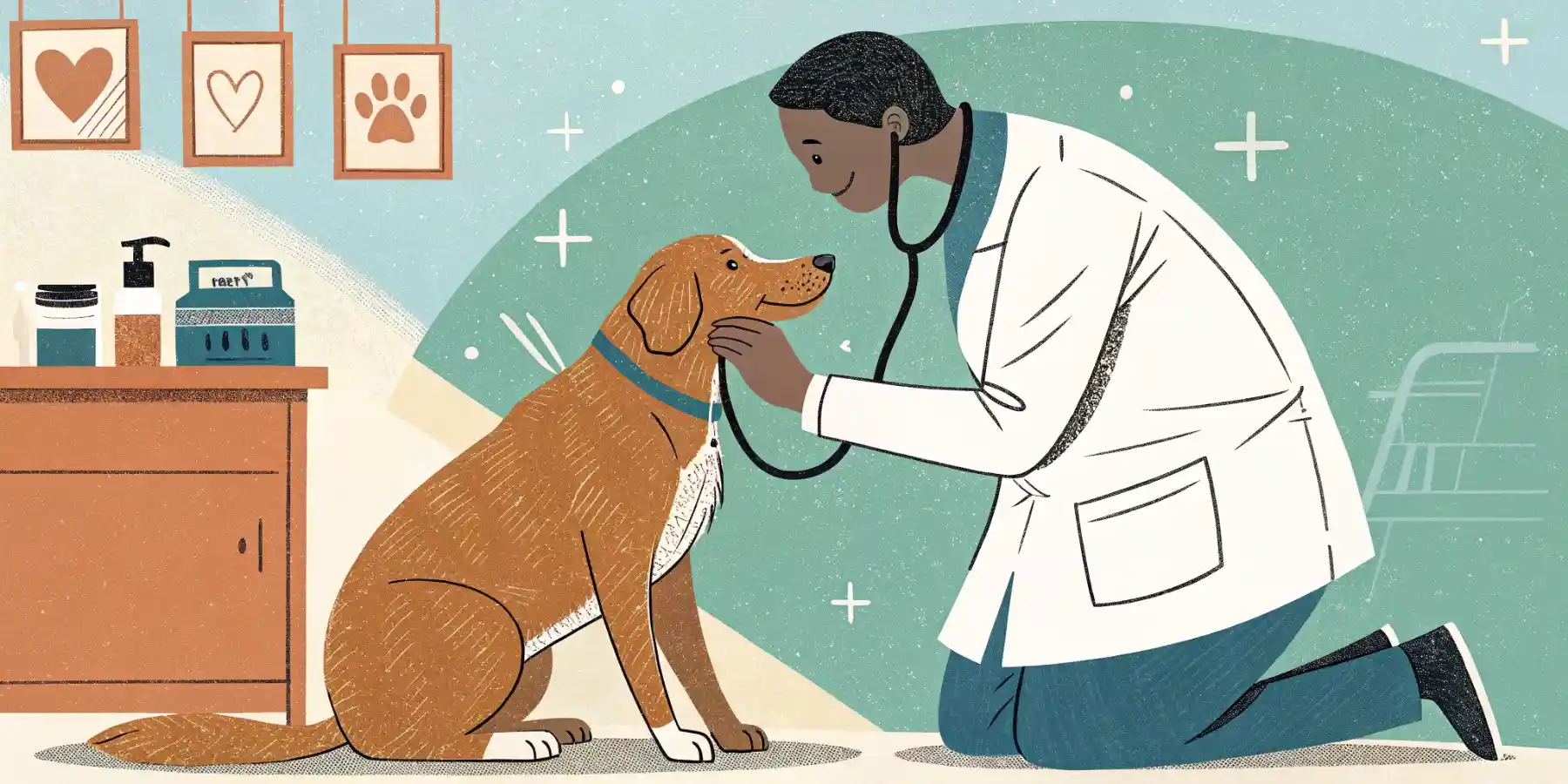 A veterinarian examines a senior dog, looking for signs of Canine Cognitive Dysfunction and ruling out other potential health problems.
A veterinarian examines a senior dog, looking for signs of Canine Cognitive Dysfunction and ruling out other potential health problems.
Managing Canine Cognitive Dysfunction: Improving Quality of Life
While there’s no cure for CCD, there are several strategies to manage the symptoms and improve your dog’s quality of life. The goal is to slow down the progression of the disease and help your dog maintain a sense of comfort, security, and purpose.
-
Dietary Management: Certain diets are specifically formulated for senior dogs with cognitive decline. These diets often contain antioxidants, omega-3 fatty acids, and other nutrients that support brain health. Specifically, look for ingredients like medium-chain triglycerides (MCTs), which can provide an alternative energy source for the brain. I’ve seen improvements in some dogs simply by switching to a senior-specific food.
-
Environmental Enrichment: Provide your dog with plenty of mental stimulation and opportunities for exercise. Short, frequent walks, puzzle toys, and interactive games can help keep their mind active. Avoid making drastic changes to their environment or routine, as this can cause further confusion. Maintain a consistent schedule for feeding, walking, and bedtime.
-
Medications: Several medications are available to help manage the symptoms of CCD. Selegiline (Anipryl) is an FDA-approved medication that can improve cognitive function in some dogs. Other medications, such as antidepressants or anti-anxiety drugs, may be prescribed to address specific behavioral issues like anxiety or sleep disturbances. Discuss all medication options with your vet, as each dog responds differently.
-
Supplements: Supplements like SAMe, phosphatidylserine, and Apoaequorin (found in the supplement Neutricks) have shown promise in supporting cognitive function in dogs. Always talk to your veterinarian before starting any new supplements, as they can interact with other medications.
-
Create a Safe and Predictable Environment: Minimize changes to your dog’s environment and routine. Keep furniture in the same place, and avoid moving their food and water bowls. Use nightlights to help them navigate in the dark. Consider using ramps or stairs to help them access their favorite spots if they have mobility issues.
-
Training and Positive Reinforcement: Continue to engage your dog in basic training exercises and reward them with positive reinforcement. Even simple commands like “sit” or “stay” can help keep their mind sharp and provide a sense of accomplishment.
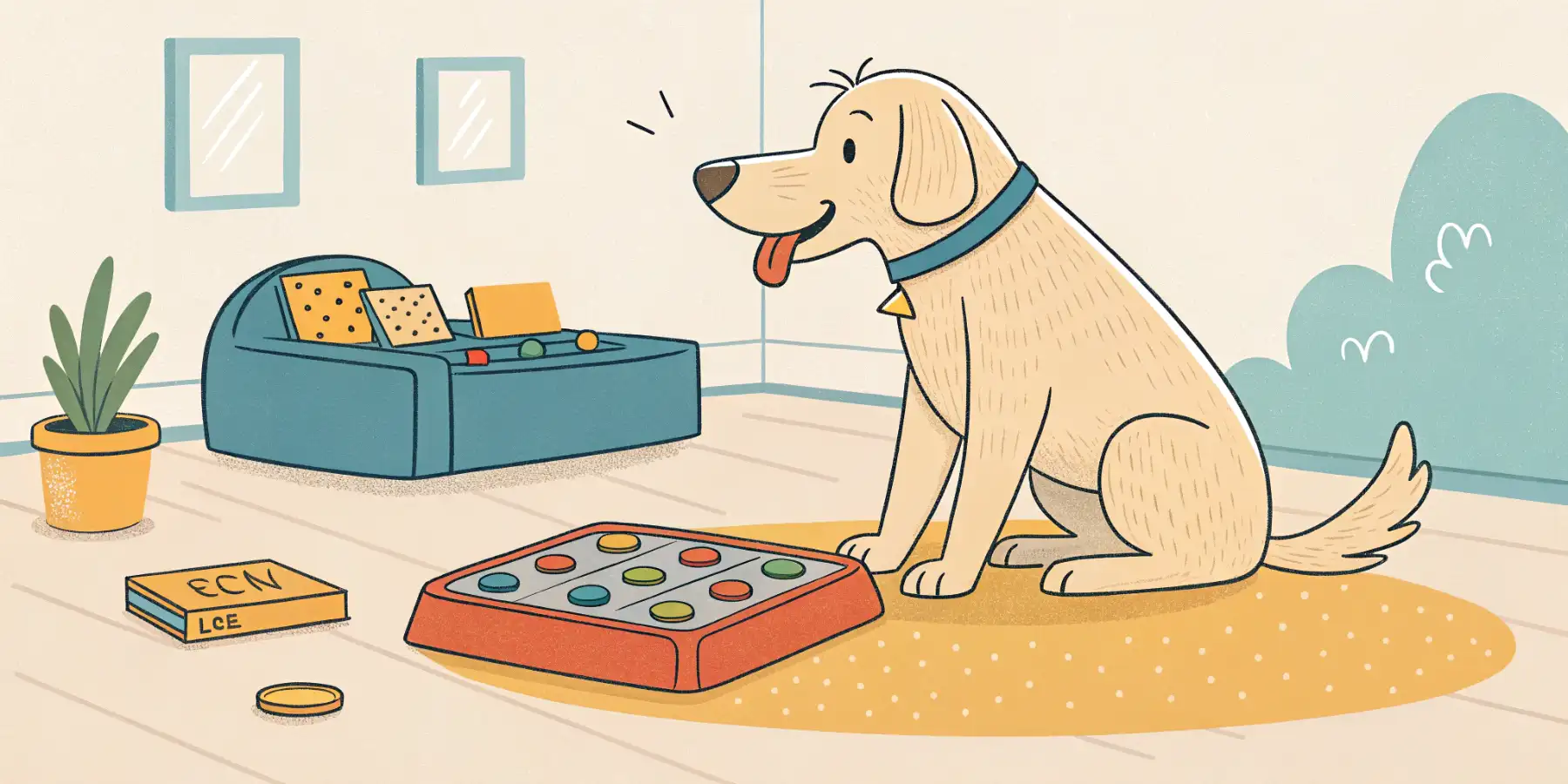 Puzzle toys provide mental stimulation for dogs with Cognitive Dysfunction, helping to keep their minds active and engaged.
Puzzle toys provide mental stimulation for dogs with Cognitive Dysfunction, helping to keep their minds active and engaged.
The Importance of Patience and Compassion
Living with a dog with CCD can be challenging, but it’s essential to remember that your dog isn’t intentionally misbehaving. They are experiencing a medical condition that is affecting their brain function. Patience, understanding, and compassion are key to providing them with the best possible care. Be prepared to adjust your expectations and adapt to their changing needs. Celebrate their small victories and cherish the moments of connection you still share.
Ultimately, providing a comfortable, safe, and loving environment is the most important thing you can do for your dog with CCD. Remember, you are not alone in this journey. Support groups and online communities can provide valuable resources and a sense of connection with other pet owners facing similar challenges. And as always, consult with your veterinarian to develop a comprehensive management plan tailored to your dog’s specific needs. Knowing the common signs of dog dementia symptoms is often the first step in getting your pet the help they need. You and your beloved companion can navigate this challenging time together.
